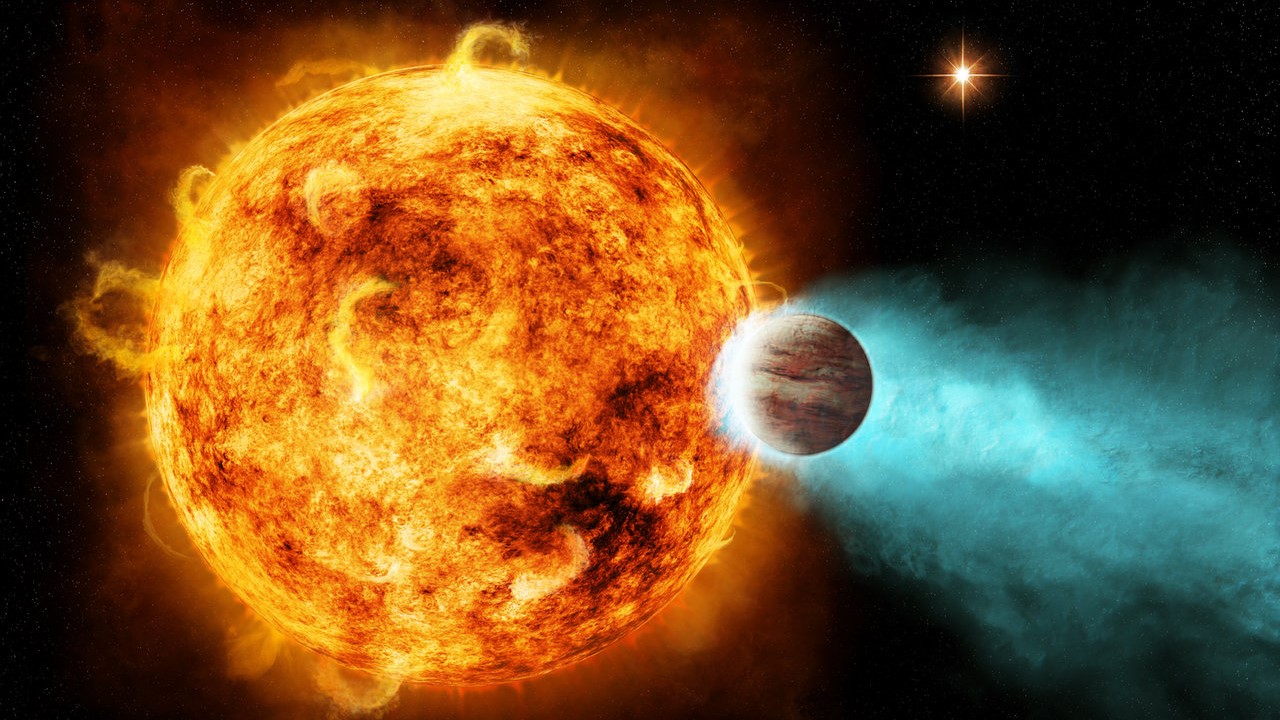Our solar system's planets aren't weird after all. Exoplanets have tilted orbits, too

Skewed planetary pathways around a star aren't so strange after all.
Scientists have known that all the planets in our solar system follow a slightly slanted trajectory as they circle the sun — but a new study shows that the phenomenon may not be unique to our cosmic neighborhood. It's common, the authors say, for distant exoplanets to exhibit orbital tilts as well. The discovery suggests it doesn't take much to make a planet's orbit tilt, although exactly how it happens requires some investigation.
In our own solar system, for example, most planets (including Earth's) lie within about six degrees of the ecliptic, meaning the orbital plane around the sun. That's a relatively small tilt: Previously, models had suggested the gravity of giant stars or planets, Jupiter-size or larger, could knock the orbits of smaller planets far askew.
But fresh research led by Yale University shows that even "pristine" star systems far away from us, which haven't been affected by such chaos, can have planets with tilted orbits. In fact, planets in those conditions may still slant as far as 20 degrees from the horizontal.
"It's reassuring," Malena Rice, lead author and Yale astronomer, said in a Tuesday (Nov. 28) statement about the research. "It tells us that we're not a super-weird solar system. This is really like looking at ourselves in a funhouse mirror, and seeing how we fit into the bigger picture of the universe."
Related: Dramatic tilts may define many alien worlds
Rice's team made the discovery while seeking out so-called "hot Jupiter" solar systems, where planets similar in size to our gas giant range extremely close to their parent stars. Their orbits tend to be less than 10 days long; by comparison, Mercury in our own solar system circles the sun every 88 days.
Breaking space news, the latest updates on rocket launches, skywatching events and more!
Intrigue emerged when the team was looking at the gas giant TOI-2202 b, a so-called "warm Jupiter" that zips around its star only every 12 Earth days. (The warm Jupiter definition can include any planet much larger than Earth with a "significantly shorter orbital period than Earth’s 365 days," Yale officials added in the release.)
It turns out TOI-2202 b's slanted orbit is very similar to planets in the NASA Exoplanet Archive, which tracks all 5,500 or so confirmed planets outside the solar system. The archive shows planets of a similar size and orbit can slant as much as 20 degrees.
"I'm trying to figure out why systems with hot Jupiters have such extremely tilted orbits," Rice said. "When did they get tilted? Can they just be born that way? To find that out, I first need to find out what types of systems are not so dramatically tilted."
The finding may shed light on how solar systems form, Rice added, including why the planets in Earth's neighborhood also have a tilt. The study was a part of the Stellar Obliquities in Long-period Exoplanet Systems (SOLES) survey, founded by Rice and co-led with previous Yale postdoctoral fellow Songhu Wang (now at Indiana University.)
The research study was published Tuesday (Nov. 28) in the Astronomical Journal.

Elizabeth Howell (she/her), Ph.D., was a staff writer in the spaceflight channel between 2022 and 2024 specializing in Canadian space news. She was contributing writer for Space.com for 10 years from 2012 to 2024. Elizabeth's reporting includes multiple exclusives with the White House, leading world coverage about a lost-and-found space tomato on the International Space Station, witnessing five human spaceflight launches on two continents, flying parabolic, working inside a spacesuit, and participating in a simulated Mars mission. Her latest book, "Why Am I Taller?" (ECW Press, 2022) is co-written with astronaut Dave Williams.
